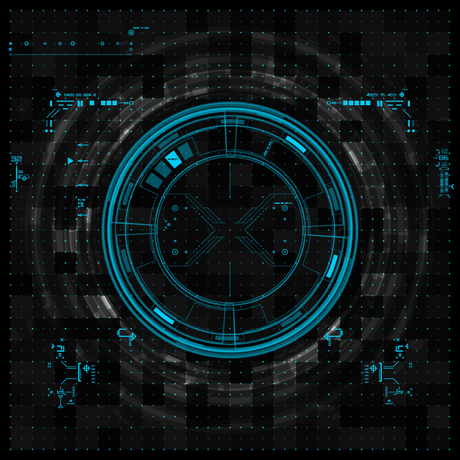Ensuring electricity smart meters are future compliant

Electricity meters come in many forms. Understanding features and capabilities, as well as the requirements of an application, can ensure that today’s meter will meet tomorrow’s requirements.
There are many electricity metering options available today, with a range of features and capabilities. Many low-cost meters lack the functionality to ensure these devices will remain useful in the future. Accuracy, sampling rate and the electrical parameters measured can vary greatly from meter to meter, but more complex capabilities are where the future truly lies.
Smart features
Tomorrow’s meters will need to encompass time of use (TOU) tariff functions, communications for automatic meter reading (AMR), regulatory approvals, reading import and export of power, data logging capabilities, real-time clock (RTC), disconnect/reconnect capability, read and write in registers for remote control, as well as reprogramming and analysis of data for forensic investigation. Ensuring ‘energy smart’ meters are feature rich means now that future needs and market or regulatory changes will be met, reducing the likelihood of meter churn and overall lifecycle costs.
Applications such as solar energy generation may require metering to have four-quadrant measurement. In addition, interval metering with 15- or 30-minute data logging with date/time stamping is essential in today’s world, while gross and net metering require smart devices with the appropriate four-quadrant measurement functionality. Interval meters record energy or other electrical measurements at 15, 30 or 60 minutes intervals, or other intervals of time, providing date/time stamp of recorded data.
Electricity and energy meters that incorporate event logs can provide additional information and date/time stamping for analysis in the event of problems such as voltage outages or reprogramming by unauthorised personnel.
Not just electricity
The expansion of additional energy readings for cold and hot water, gas and greywater monitoring can be an integral part of smart meters which incorporate pulse inputs. Pulses from water and gas meters can be sent to the smart meter, using pulse data logging, which can in turn be forwarded to billing systems and/or building management systems (BMS) and other third-party software AMR solutions.
Improved measurement standards, such as Class 0.5S accuracy to AS/IEC62053-22, have led to increased accuracy performance in smart metering without any major cost impact. Class 1.0 accuracy meters are widely accepted in the market. However, advances in standards coupled with new technology has provided for enhanced measurement with Class 0.5S, particularly at low loads.
Space savings
Advances in technology have improved the space-to-design ratio performance of smart meters. Reduced meter design space additionally reduces required panel space, while ensuring that operational and performance specifications are not compromised.
Space is a premium in embedded networks, in both new installations and in existing buildings where retrofits or upgrades are required. Providing space savings using advanced smart metering designs can provide space savings upwards of 90%, when compared with typical ‘bottom up connect’ utility meters. This reduces the triple bottom line and provides savings across the board; from the architect to the builder or developer and the electrical contractor.

Sustainability support
Smart metering now utilises algorithms to profile energy usage showing daily, weekly, monthly and quarterly readings. This function provides electricity, water and gas usage information in an easy-to-read format and ensures data is presented in a way that supports the reporting for sustainability rating tools and schemes including Green Star and NABERS, without the need for dedicated software.
Improved communications
Advanced communications capability provides further benefits, allowing the meter to be read locally or remotely. Initially, the use of RS232 protocol provided only a 1:1 ratio of a master/slave relationship and the use of RS485 improved this to a ratio of 1:32. These topologies provide only limited communication, however, as software connections are restricted to a single master polling the downstream nodes or devices. Using Ethernet TCP/IP, as found in smart metering, provides multiple TCP socket support and therefore has the added advantage of providing flexible ‘multiple’ relationship configurations.
As we move into the age of Internet of Things (IoT), smart meters are increasingly connected directly to the internet and the addition of an application programming interface (API) ensures interoperability via third-party software applications. As the NBN is rolled out across Australia, smart metering connectivity is inherently NBN-ready, or easily connected to the internet via ADSL-2, 3G or 4G, and data access is available to the end user without the restrictions traditionally associated with proprietary data.
Advanced assurance
Trade billing measurement in Australia must comply with the National Measurement Institute of Australia (NMI) M6-1 standard, which provides assurance to the end user that the meter will continue to operate and function under varying metrology conditions, thus ensuring repeatability with accuracy standards.
When considering the available options in smart energy metering, ensuring that the vendor has the required technical knowledge and can offer ready support should always be factored in, as should the warranty period on offer and the proposed warranty on accuracy performance.
Using data to beat the energy crisis
National Ceramic Industries Australia has enlisted the help of OFS to tackle the energy crisis...
Multimeter safety in Australia
Recent serious incidents involving multimeters have highlighted the risks of using them when...
Top 10 tips for keeping safe this winter
As Australians pull heaters and electric blankets out of storage and spend more time indoors,...




